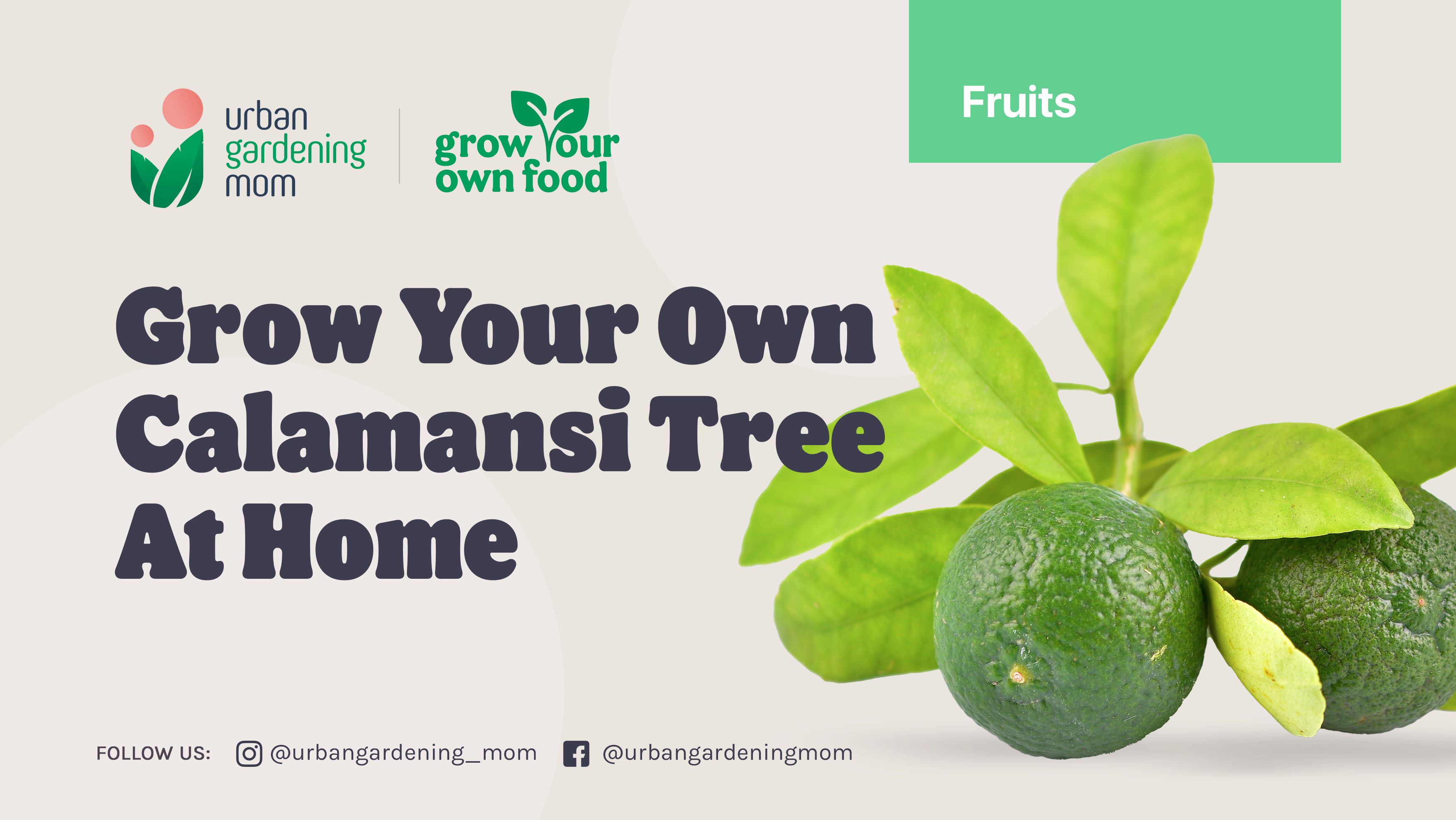
Grow your Own Calamansi Tree At Home
- Jun 27, 2022
- 7 Comment(s)
The first seedling that I ever bought as a gardening newbie was that of the calamansi. After more than a year of waiting, it has finally started to bear fruit early this year. Since then, I never had to buy calamansi for our daily consumption. Planting your own calamansi tree can be a very rewarding experience for any home gardener. With proper care, it will continue to produce abundantly year after year.
Also known as calamondin in other countries, the calamansi is a popular ingredient in a lot of Filipino dishes. Like lemon in western cuisine, Filipinos add its sour juice to most of their meat marinates , or to perk up cooked meals when used in combination with the local fish sauce or soy sauce. Because of the strong acidic qualities of the fruit, calamansi is also known for its many domestic uses, including the treatment of insect bites and sore throat and removal of stains and odor in fabric materials.
Here are a few tips for growing calamansi in your own backyard:
Tip # 1. When using a container, choose a large pot.
The tree can grow up to 5 feet when grown in pots, and even taller if planted directly into the ground. It is better to transplant the seedling into a large container pot from the start, rather than wait until it has fully grown into a woody shrub before transplanting it to its final location. An ideal pot size should have at least 18 inches in diameter at the opening and 24 inches in depth.
Tip # 2. Use a well-draining soil.
When grown in a pot, the tree does not want to be soaked too much, or else its roots may rot. I use a combination of sand and loamy soil, with a lot of organic matter or compost. The pot should have several holes on different sides, to allow the excess water to drain.
Tip # 3. Expose the plant to a lot of sunlight.
Choose a location where there is a lot of sunlight. In order to sustain and bear lots of fruits all year round, the plant needs to be exposed to at least 6 hours of sunlight.
Tip # 4. Fertilize at the root base every month.
When grown in pots, the plant tends to deplete the nutrients in the soil quite easily. There is a need to replenish the soil nutrients regularly, to ensure continued harvest. I use commercially available compost or organic fertilizers. Alternatively, discarded fish parts or coffee grounds can also be buried into the soil for conditioning. Fertilizer should be applied along the sides of the pot where the root tips are present.
Tip # 5. Do not over water.
The plant will thrive better if the soil is not too moist. It also encourages the plant to produce more flowers when it is a little stressed from the heat of the sun.
The plant can be propagated from seeds or through grafting. It can also be propagated from cuttings, although I have not been very successful with this technique. For me, it is easier to buy a seedling from the local garden store. To ensure better success, choose a seedling that has grown by at least 2 feet.
Bonus Health tip:
For stomach cleansing, drink the juice of a freshly picked calamansi on an empty stomach when you wake up in the morning. Do this at least twice a week.


Comments (7)
I’d like to ask how many fruits does a calamansi tree have on the average?
Hello.
I have two seedlings in separate pots.
How far apart can I place them in my garden?
Hi live in Washington ,and it’s currently been raining a lot and it’s getting cold . Do you have any tips how to take care of the calamansi In cold weather .
How to prune a Calamansi plant?
Hi! Thanks for sharing these tips on growing kalamansi. I just started planting my kalamansi seedlings already having germinated them using a paper towel. I have one question though, how often should you water kalamansi seedlings? Please give me an estimate number like 3 or 4 times in a week? Thank you so much.
Are we prohibited to get the fruit at noontime cause this will cause the plant to die?
Are we prohibited to get the fruit at noontime cause this will cause the plant to die?